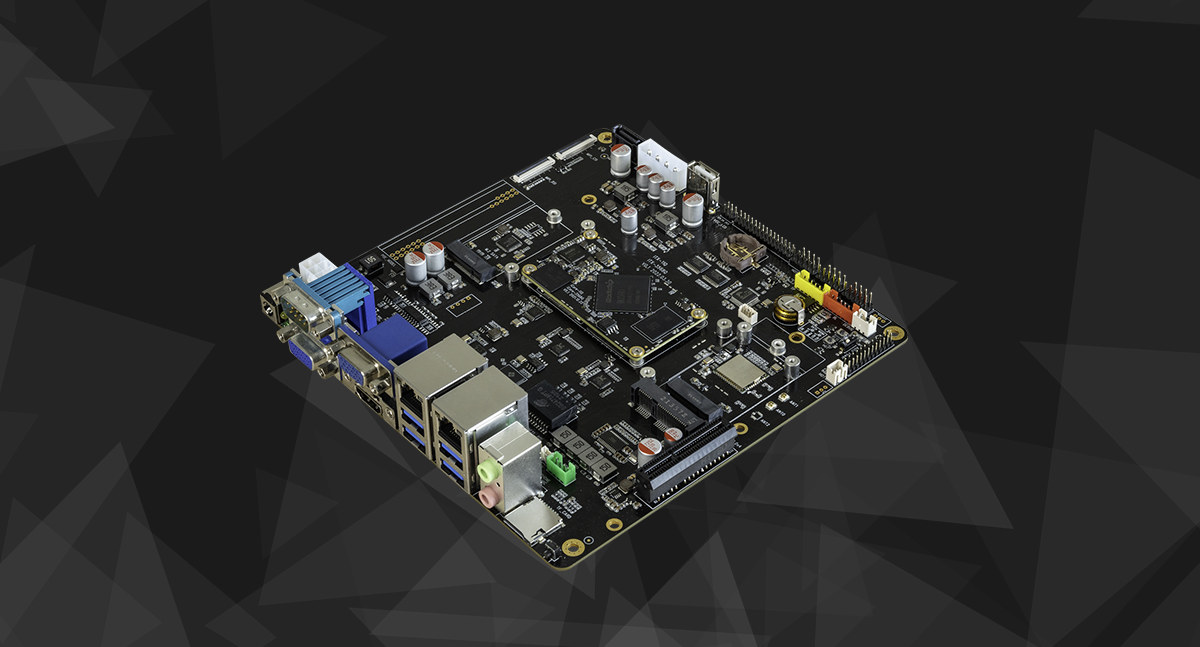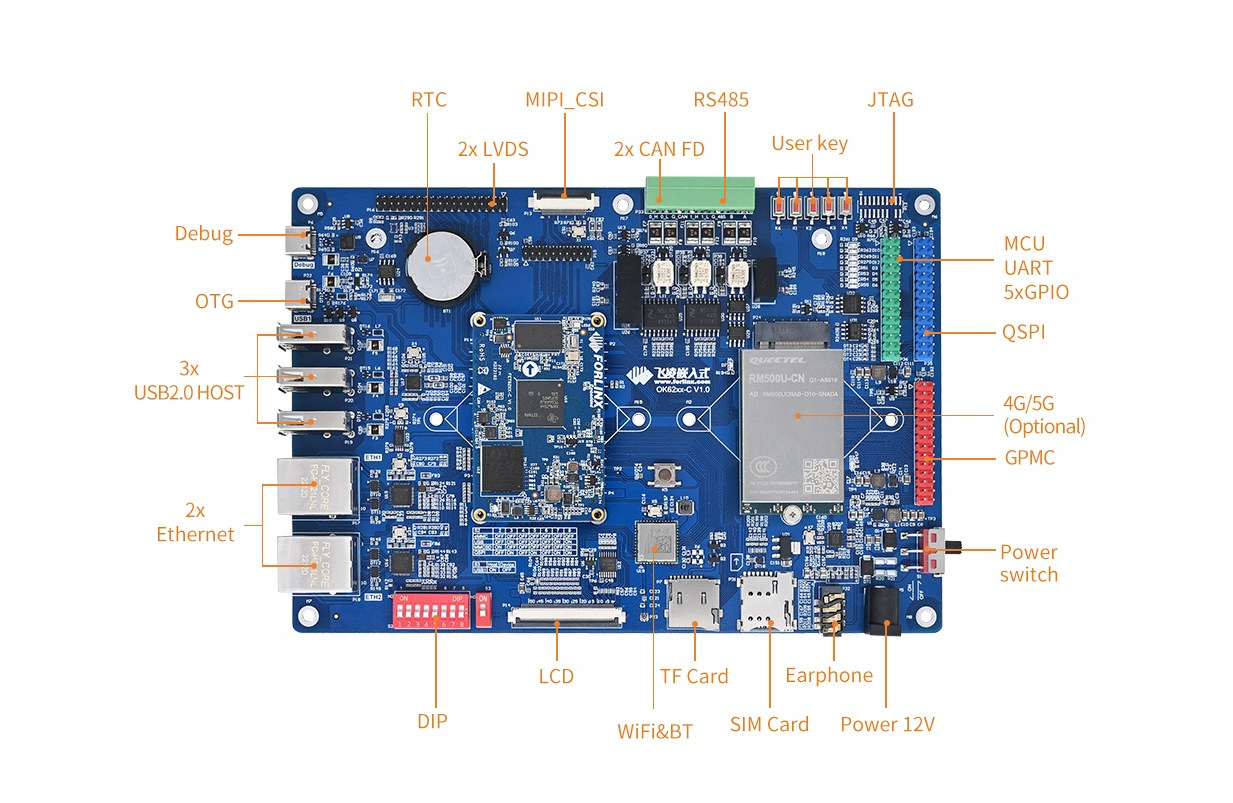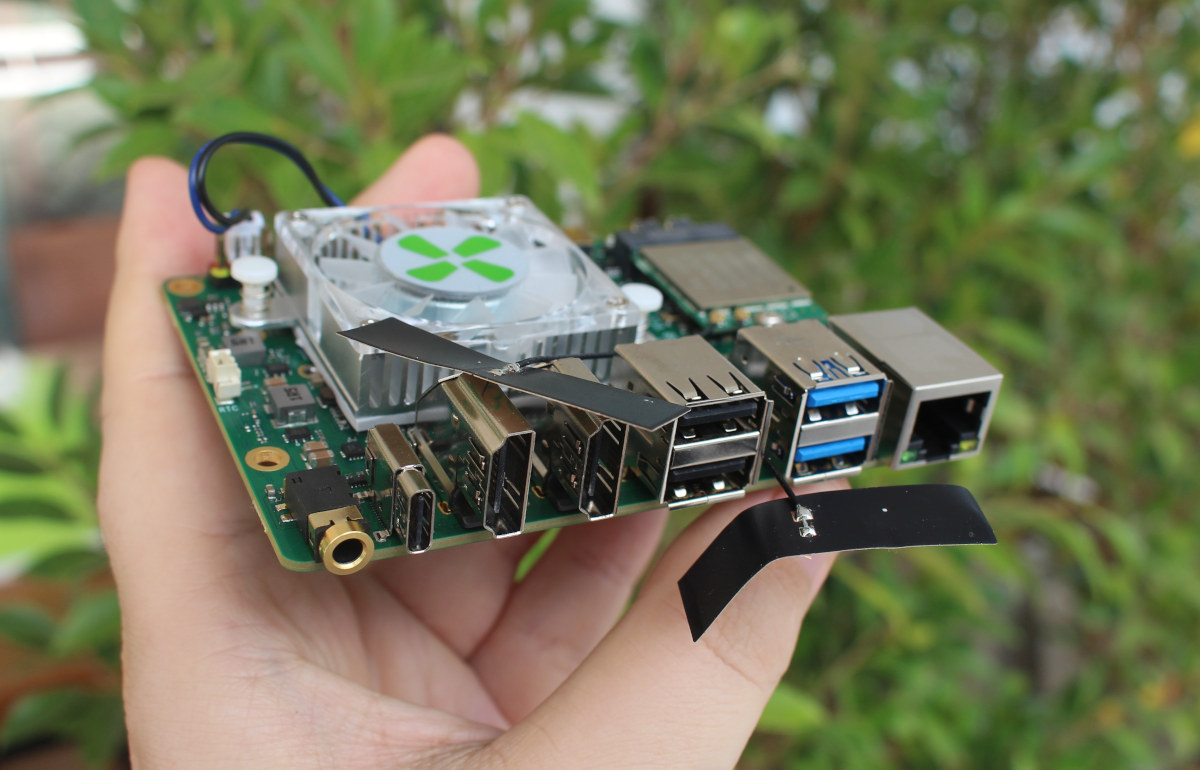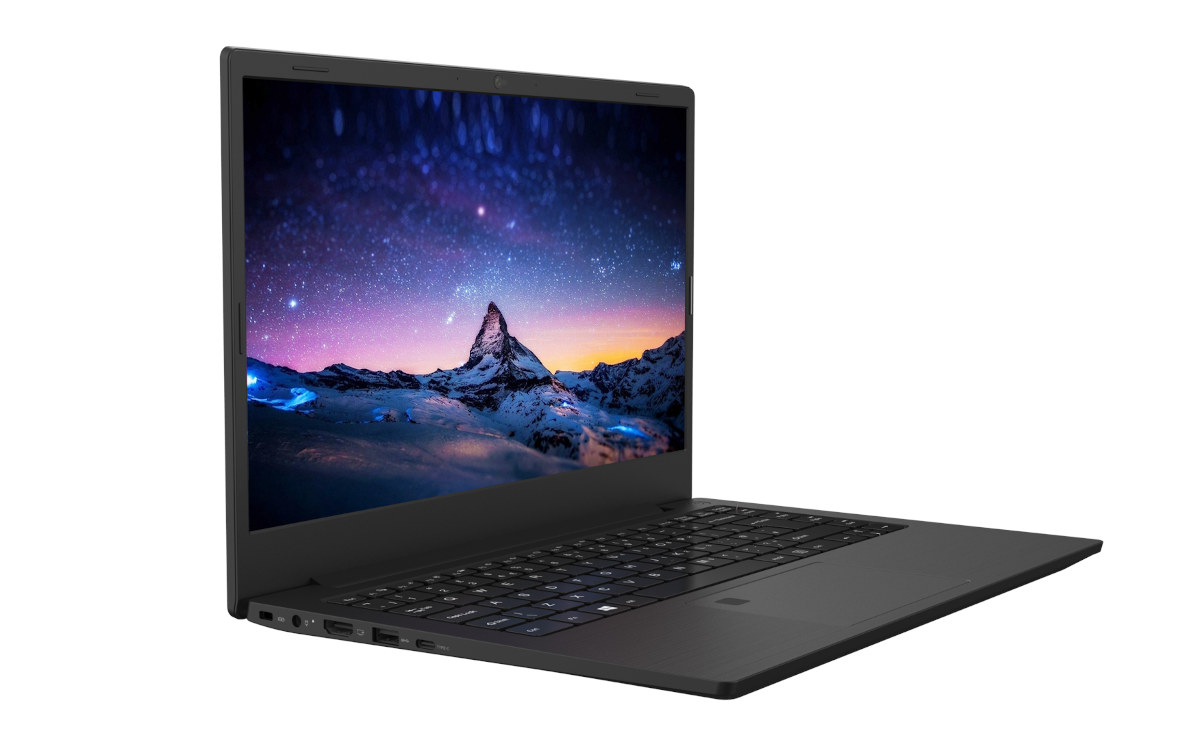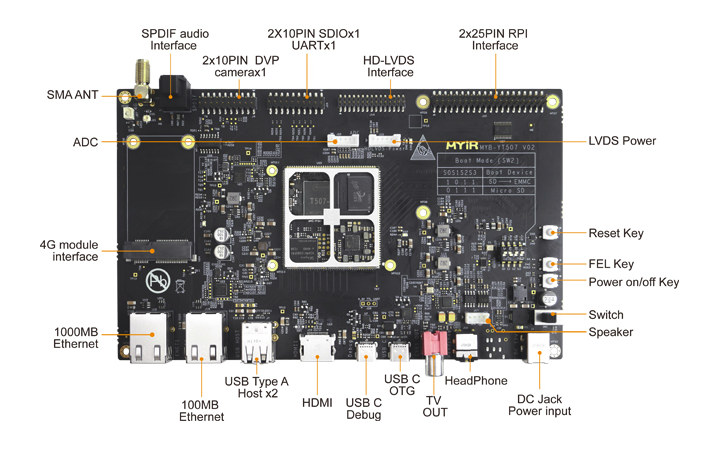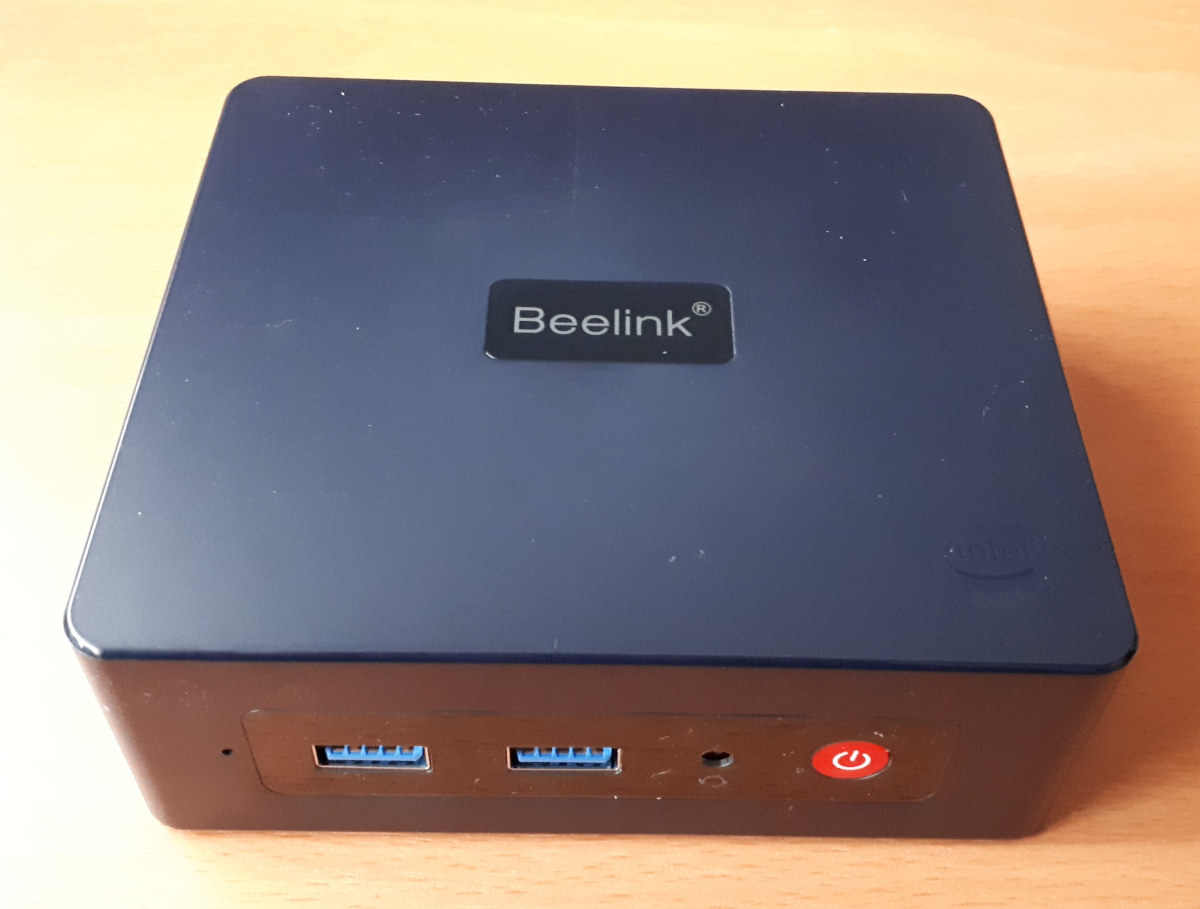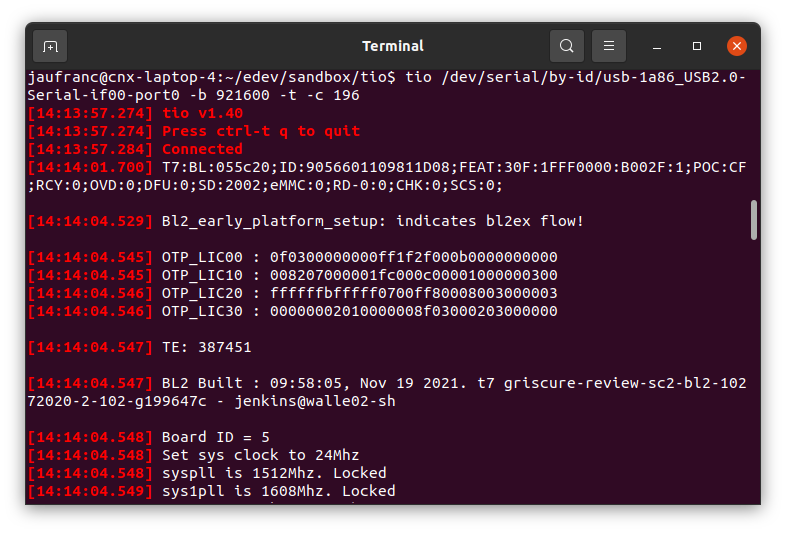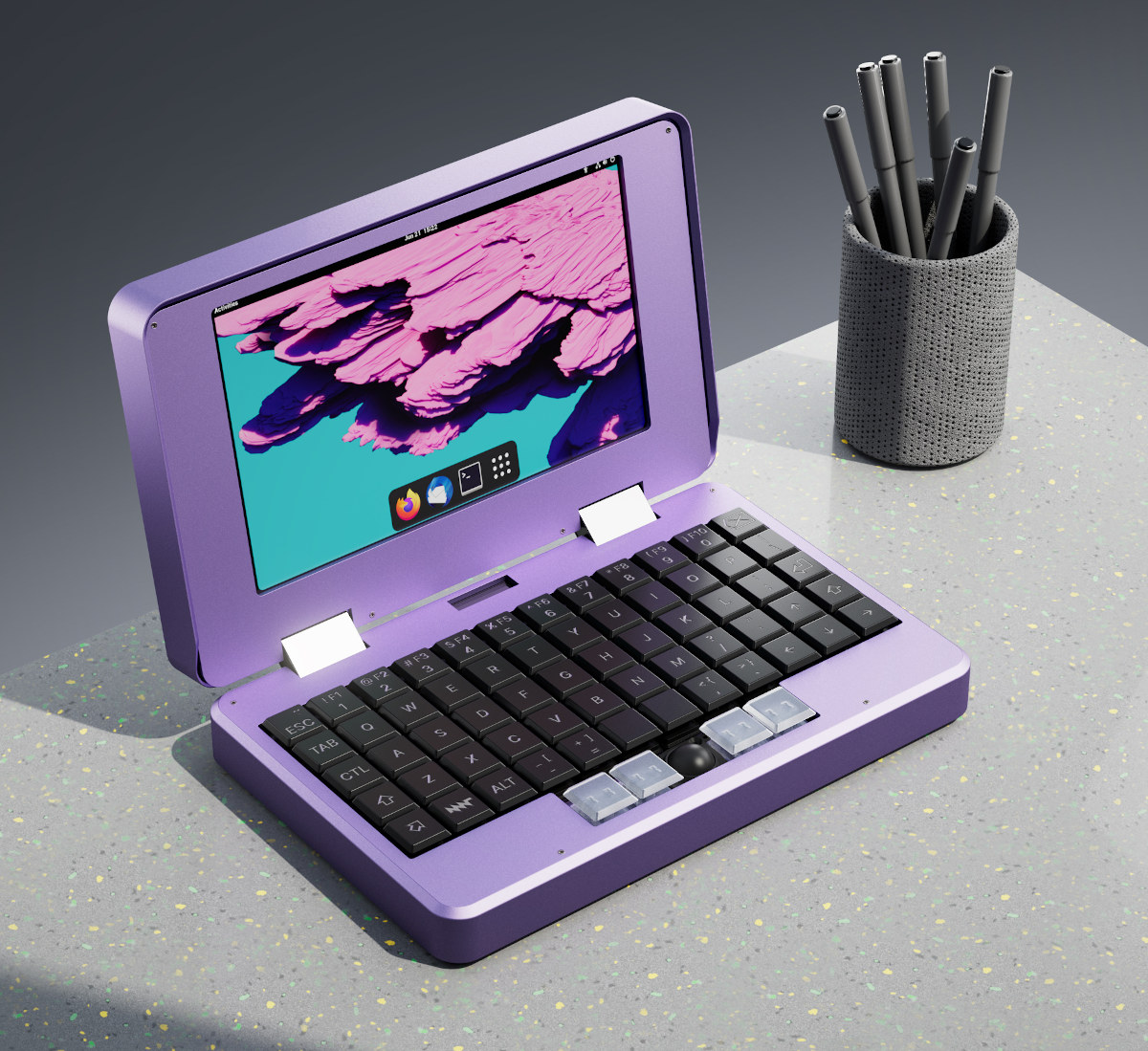Firefly ITX3588J mini-ITX motherboard with Rockchip RK3588 SoC now has a little sister/brother based on Rockchip RK3568 quad-core Cortex-A55 processor called ITX-3568JQ, and designed to power Arm PCs, cloud terminals, industrial controllers, edge computers, advanced NVR, NAS devices, and more. The motherboard supports up to 8GB RAM, 128GB eMMC flash, offers SATA storage, dual Gigabit Ethernet, WiFi 6, optional 4G or 5G cellular connectivity, can handle up to three independent displays, and offers plenty of I/O options including an RS232/RS485 DB9 connector and a PCIe slot. Firefly ITX-3568JQ specifications: SoC – Rockchip RK3568J quad-core Arm Cortex-A55 processor @ up to 2.0 GHz with Arm Mali-G52-2EE GPU with support for OpenGL ES 3.2, OpenCL 2.0, Vulkan 1.1, 1.0 TOPS NPU, 8MP ISP, 4Kp60 video decoding, 1080p60 H.265/H.264 video encoding System Memory – 1GB, 2GB, 4GB, or 8GB LPDDR4 Storage 8GB, 16GB, 32GB, 64GB, or 128GB eMMC flash 16MB SPI flash 1x […]
Texas Instruments AM6254 powered industrial SBC features dual GbE, CAN Bus, RS485, optional 4G/5G cellular networking
Texas Instruments Sitara AM623 and AM625 Arm Cortex-A53 AIoT processors were just introduced last month, but Forlinx has already introduced the OK6254-C SBC powered by the Sitara AM6254 quad-core processor with up to 2GB DDR4, and an 8GB eMMC flash. The board features two Gigabit Ethernet ports, CAN FD and RS485 interfaces, plus plenty of I/O headers, support for up to three displays via LVDS and parallel RGB interfaces, as well as optional support for 4G/5G cellular connectivity that makes it suitable for all sorts of industrial applications. Forlinx OK6254-C specifications: FET625x-C SoM SoC – Texas Instruments AM6254 quad-core Cortex-A53 processor @ 1.4GHz with Cortex-M4F real-time core @ 400 MHz, Imagination AXE1-16M GPU @ 500MHz with OpenGL 3.x/2.0/1.1 + Extensions, and Vulkan 1.2 support; Single (AM6251) and dual-core (AM6252) modules are also available System Memory – 1GB (default) or 2GB DDR4-1600 Storage – 8GB eMMC flash 4x 80-pin board-to-board […]
ROCK 5B developer edition preview – Part 1: Unboxing and first boot to Debian 11
Radxa ROCK5 Model B (aka ROCK 5B) is one of the most anticipated Rockchip RK3588 single board computers due to its features set and relatively affordable price. It was first showcased in January, but it’s taking a while as the Cortex-A76/A55 SoC is a complex beast. The good news is that the public launch is getting closer as Radxa sent “developer edition” samples to developers and enthusiasts for a “debug party”. I was one of the recipients so, in this post, I’ll have a closer look at the latest revision of the board, and give it a quick try first before going into more details in the second of this preview. ROCK5 Model B unboxing I received the 16GB RAM version which should be the same for all board part of the “developer edition batch. Developers are invited to submit reports to Radxa forums, and since those are public, anybody […]
ROMA Linux laptop to feature quad-core RISC-V SoC, support Web3, NFT, cryptocurrencies, etc…
ROMA is an upcoming Linux laptop equipped with an unnamed quad-core RISC-V processor with GPU and NPU, up to 16GB RAM, 256GB storage, primarily aimed at software developers, and with Web3 technology integration. The ROMA laptop will be born out of the collaboration between DeepComputing working on engineering and Xcalibyte taking care of system tuning, plus PW (assembly), ECP (security), XC (crypto), Rexeen (voice), and the LatticeX Foundation (PoS blockchain, NFT). ROMA laptop preliminary specifications: SoC – Quad-core RISC-V CPU with GPU for graphics, NPU for AI (12nm chip for the Pro model, 28nm chip for the Standard model) System Memory – 16GB LPDDR4/LPDDR4X RAM Storage – 256GB eMMC flash Security – Arm SC300 security enclave processor Display, keyboard, touchpad I agree that’s a bit light on details. We’re told the laptop will support most Linux operating systems and the company will offer free SoC and SoM upgrades, as well […]
AEC-Q100 qualified module features Allwinner T507-H processor for automotive applications
We first wrote about Allwinner T507 when we covered a module and devkit from Forlinx, but now MYiR Tech has designed its own AEC-Q100 qualified system-on-module (MYC-YT507H) and the MYD-YT507H development board based Allwinner T507-H processor. MYC-YT507H – Allwinner T507-H SoM Specifications: SoC – Allwinner T507-H with a quad-core Arm Cortex-A53 processor @ 1.5GHz, Arm Mali-G31 MP2 GPU with support for OpenGL ES 3.2/2.0/1.0, Vulkan1.1, OpenCL 2.0; 4K60 H.265/VP9/AVS2 video decoder, 4K H.264/MJPEG video encoder System Memory – 1 or 2GB LPDDR4 Storage – 8GB eMMC flash, 32Kbit EEPROM (or is it 32KB/256Kbit – see block diagram below) 222x castellated holes with 1.0mm pitch for carrier board connection Networking – 1x RGMII and 1x RMII Video 1x HDMI 2.0a up to 4Kp60 2x single-channel LVDS or 1x dual-channel LVDS or 24-bit RGB up to 1080p60 1x TV CVBS output with PAL/NTSC Camera – 1x DVP digital camera, 1x MIPI CSI […]
Beelink MINI S Review – A Low-cost mini PC tested with Ubuntu 22.04 and Windows 11
Whilst the first mini PCs were relatively simplistic using low-powered Intel Atom processors with minimal memory, storage, and ports, more recent mini PCs have become so advanced they can challenge SFF builds for both performance and functionality. However, such mini PCs come with prices to match. Beelink has now released the MINI S which is a mini PC that goes back to the basics and is based on a cut-down version of their earlier Beelink U59 mini PC and priced to match. Beelink kindly sent one for review and I’ve looked at performance running both Windows and Ubuntu and compared it directly against the U59. Beelink MINI S hardware overview The Beelink MINI S physically consists of a 115 x 102 x 41mm (4.53 x 4.02 x 1.61 inches) square plastic case. As an actively cooled mini PC, it uses Intel’s new 10 nm Jasper Lake N5095 processor which is […]
tio is a serial device I/O tool for Linux targeted at embedded developers
There are already several serial terminal programs such as Putty and minicom, and in recent times, I’ve been using Bootterm myself. But that does not mean there isn’t room for more and Martin Lund has developed tio serial device I/O tool for Linux. Martin found out many of the existing tools are very modem focused or a bit cumbersome to use, so he developed tio as the simpler alternative which puts less focus on classic terminal/modem features and more focus on the needs of embedded developers and hackers.
MNT Pocket Reform 7-inch modular mini laptop takes a range of Arm (and FPGA) modules
MNT Pocket Reform is an open-source hardware mini laptop with a 7-inch Full HD display, an ortholinear mechanical keyboard, and trackball, that follows the path of its older and bigger sibling: the MNT Reform 2 laptop initially launched with an NXP i.MX 8M quad-core Arm Cortex-A53 module. The new laptop will not only support a similar “NXP i.MX 8M Plus” module but also a range of other Arm modules namely an NXP Layerscape LS1028A module with up to 16GB RAM, the Raspberry Pi CM4 module via an adapter, Pine64 SOQuartz (RK3566, up to 8GB RAM), as well as based on AMD Xilinx Kintex-7 FPGA for industrial use. MNT Pocket Reform specifications: Available system-on-modules Standard: NXP i.MX 8M Plus quad-core Arm Cortex-A53 @ 1.8GHz with 4 or 8 GB DDR4, Vivante GC7000UL GPU, 2.3 TOPS NPU NXP Layerscape LS1028A dual-core Arm Cortex-A72 with 8 or 16GB DDR4, Vivante GC7000UL GPU Raspberry […]


